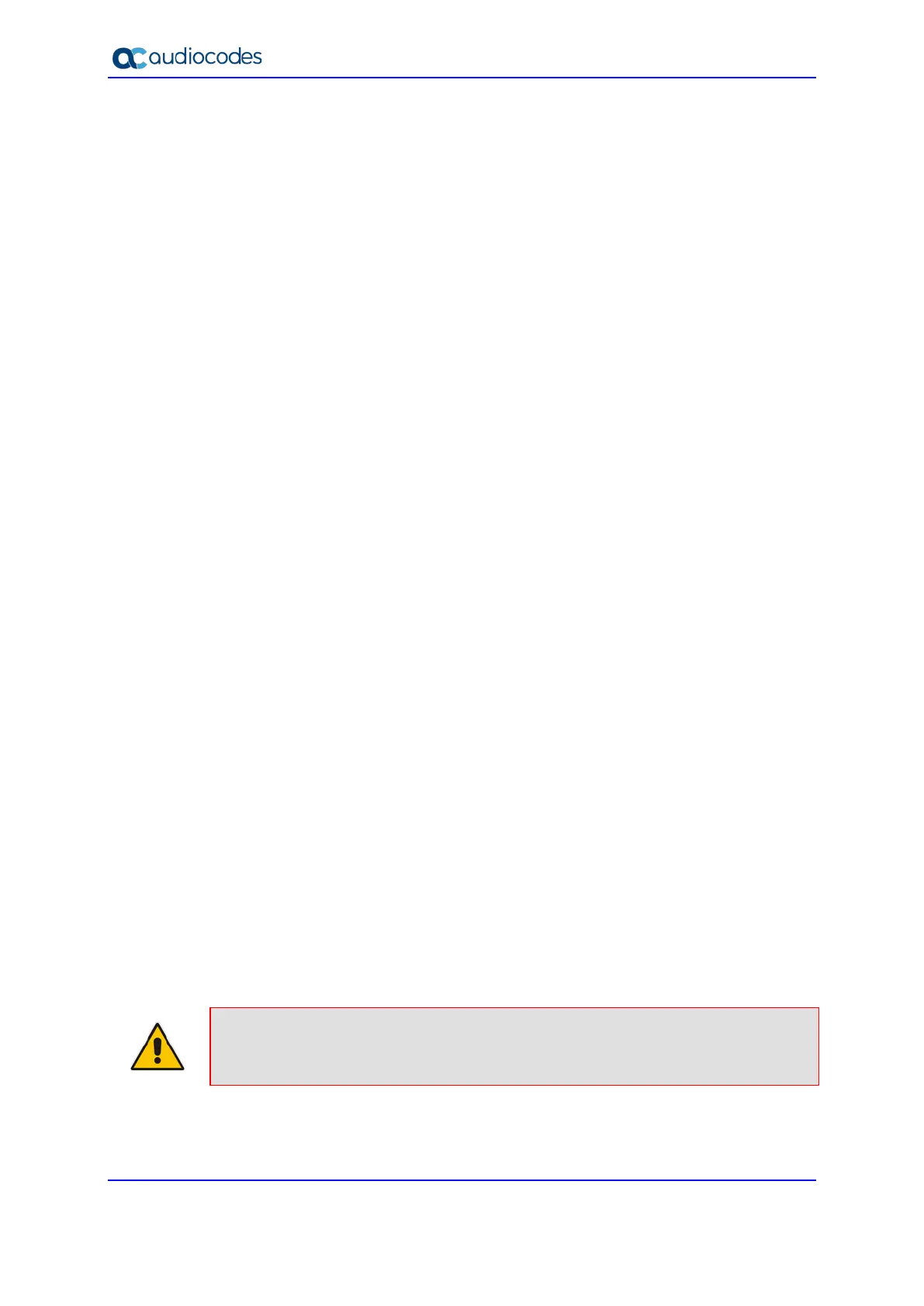User's Manual 688 Document #: LTRT-10532
Mediant 500L Gateway & E-SBC
Call Forking: The IP-to-IP Routing table can be configured to route an incoming IP
call to multiple destinations (call forking). The incoming call can be routed to multiple
destinations of any type such as an IP Group or IP address. The device forks the call
by sending simultaneous INVITE messages to all the specified destinations. It handles
the multiple SIP dialogs until one of the calls is answered and then terminates the
other SIP dialogs.
Call forking is configured by creating a Forking group. A Forking group consists of a
main routing rule ('Alternative Route Options' set to Route Row) whose 'Group Policy'
is set to Forking, and one or more associated routing rules ('Alternative Route
Options' set to Group Member Ignore Inputs or Group Member Consider Inputs).
The group members must be configured in contiguous table rows to the main routing
rule. If an incoming call matches the input characteristics of the main routing rule, the
device routes the call to its destination and all those of the group members.
An alternative routing rule can also be configured for the Forking group. The
alternative route is used if the call fails for the Forking group (i.e., main route and all its
group members). The alternative routing rule must be configured in the table row
immediately below the last member of the Forking group. The 'Alternative Route
Options' of this alternative route must be set to Alt Route Ignore Inputs or Alt Route
Consider Inputs. The alternative route can also be configured with its own forking
group members, where if the device uses the alternative route, the call is also sent to
its group members. In this case, instead of setting the alternative route's 'Group Policy'
to None, you must set it to Forking. The group members of the alternative route must
be configured in the rows immediately below it.
The LCR feature can also be employed with call forking. The device calculates a
maximum call cost for each Forking group and routes the call to the Forking group
with the lowest cost. Thus, even if the call can successfully be routed to the main
routing rule, a different routing rule can be chosen (even an alternative route, if
configured) based on LCR. If routing to one Forking group fails, the device tries to
route the call to the Forking group with the next lowest cost (main or alternative route),
and so on. The prerequisite for this functionality is that the incoming call must
successfully match the input characteristics of the main routing rule.
Dial Plan Tags for Representing Source / Destination Numbers: If your
deployment includes calls of many different called (source URI user name) and/or
calling (destination URI user name) numbers that need to be routed to the same
destination, you can employ user-defined tags to represent these numbers. Thus,
instead of configuring many routing rules, you can configure only one routing rule
using the tag as the source and destination number matching characteristics, and a
destination for the calls. For more information on tags, see
Using Dial Plan Tags for
Matching Routing Rules on page 726.
Dial Plan Tags for Determining Destination IP Group: Instead of configuring
multiple routing rules, you can configure a single routing rule with a specific
"destination" Dial Plan tag. The device uses the tag to determine the destination IP
Group. For more information, see
Using Dial Plan Tags for Routing Destinations on
page 736.
Fax Rerouting: You can configure the device to reroute incoming calls that it
identifies as fax calls to a new IP destination. For more information, see Configuring
Rerouting of Calls to Fax Destinations on page
697.
Note: Call forking is not applicable to LDAP-based IP-to-IP routing rules.
The following procedure describes how to configure IP-to-IP routing rules through the Web
interface. You can also configure it through ini file (IP2IPRouting) or CLI (configure voip >
sbc routing ip2ip-routing).

